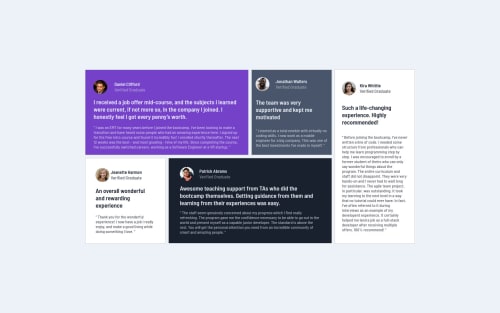I used Grid, Flexbox and media queries along with HTML and CSS.

Solution retrospective
I used a grid here as I am a beginner that's why I am not satisfied with the work for this challenge. I tried my best for this Challenge, but I am unable to use that quotation image in this challenge and I was unable to position the cards mentioned in the design for mobile phones. If any suggestions do let me know. I will be thankful to all who give suggestions.
Please log in to post a comment
Log in with GitHubCommunity feedback
- @FoxMalder-coder
Hi! The cards could be positioned by using "order: number". "number" can have positive or negative value. To put the quotation mark (use the full properties): first set background-color, then set background-image (don't forget you need path like ../images/), background-position and background-repeat. Sometimes we need background-size also but not this case - here size is 100% of origin so we didn't need to correct it.
Marked as helpful
Join our Discord community
Join thousands of Frontend Mentor community members taking the challenges, sharing resources, helping each other, and chatting about all things front-end!
Join our Discord